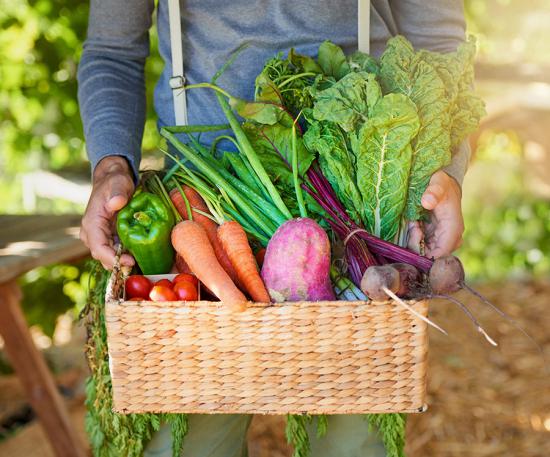
The transition between seasons also brings some transitions in our lives. With the nicer weather and longer daylight starting to appear, we may start to change our physical-activity choices and the way we cook our food. Winter foods tend to be heavy to keep us warm, and summer foods tend to be light to keep us cool. Our bodies have a thermic response to the weather. As its starts to get warmer outside, we also tend to eat less, with lighter or cooler foods. For example, the barbecue is rarely used in winter and the crock-pot is rarely used in the summer. The seasons can definitely affect our cooking methods and food choices.
Picking fruits and vegetables that are in season is also a boost to our health as well. When we stay seasonal with our choices, we get the most available nutrients out of them with their prime ripeness. Here are some choices to consider adding to your recipes this spring. For more inspiration, click on the fruit or veggie links for some recipes ideas:
Spring Vegetables:
- Artichokes are very filling. They are rich in satiating fiber (7 grams, or about 25% of your daily need). In addition, they have just 60 calories per medium artichoke.
- Asparagus supplies many nutrients, in particular fiber, folate, and the antioxidants vitamin E, lutein, and beta-carotene.
- Fresh spring peas taste nothing like the frozen kind and are rich in iron and the antioxidants beta-carotene and lutein.
- Radishes are a member of the cruciferous family of vegetables that includes broccoli and kale, which contain glucosinolates, compounds that may help protect against certain cancers.
Spring Fruits:
- Apricots are an excellent source of Vitamin A, C, potassium, and fiber.
- Mangoes are an excellent source of vitamin A, vitamin C, and folate. Mangoes are also a good source of vitamin B6, fiber, and copper.
- Pineapples are an excellent source of vitamin C. One cup of cubed pineapple supplies around 80 calories and two grams of fiber.
- Berries (late spring): Eating blackberries, blueberries, strawberries, raspberries, and other berries can be a boost to health. They are packed with antioxidants and other flavonoids that help improve brain function and reduce the risk of type 2 diabetes and heart disease.
Interested in learning more on how to get started with growing your own fresh, healthy, local produce? Register for the webinar Spring Garden Planning on March 16 from 11:30 a.m. to noon and Learn to Love Vegetables! on April 27 from noon to 12:30 p.m. to learn tips and tricks for how to prepare your vegetables and make them taste amazing! To register, click the webinar titles or visit linktohealth.osu.edu and search by date or keyword.
image credit: istockphoto.com
